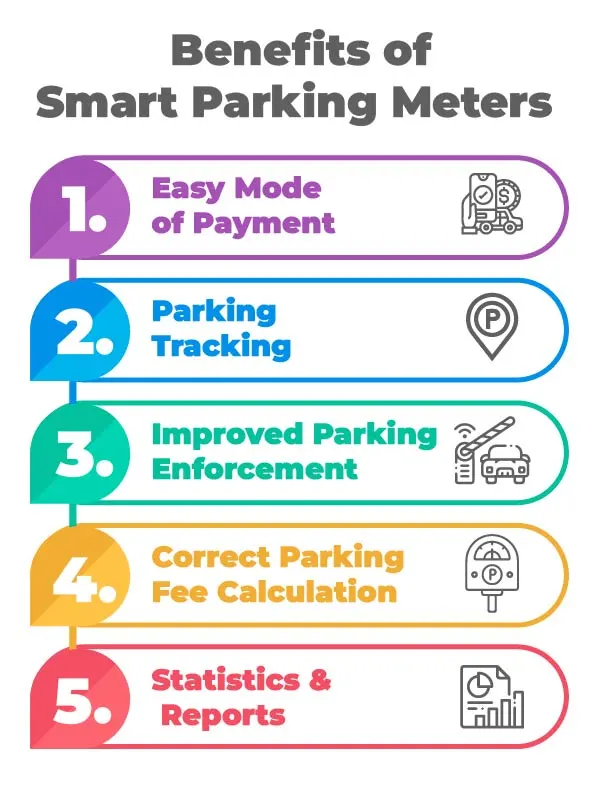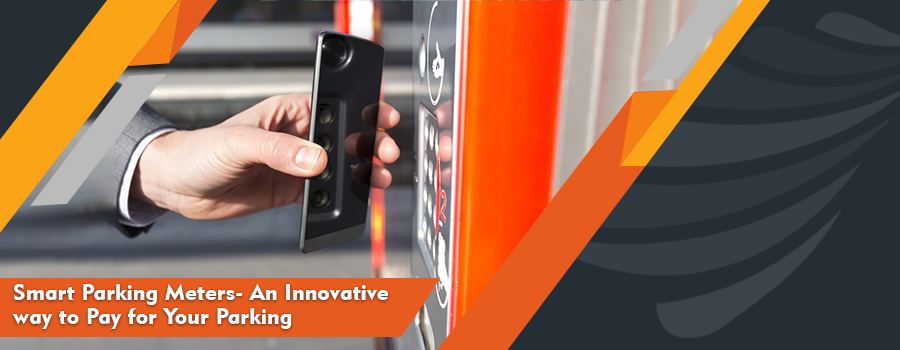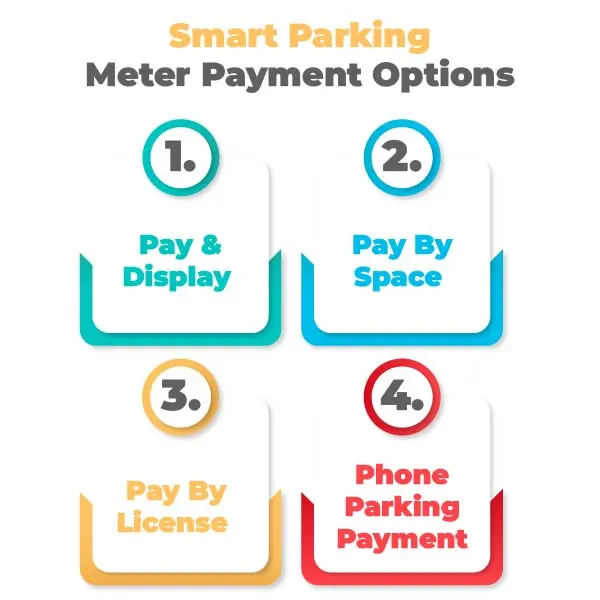The face of parking is revolutionizing continuously and becoming technologically advanced due to widespread integration and acceptance of smart parking solutions in society. One of the most important aspects of smart parking is associated with parking payments. In this regard, parking meters morph to include more features, become smarter, and work beyond the pay aspect. Smart parking meters are essential in improving the parking experience by enabling drivers to pay for their parking in multiple ways. This ultimately saves time and the hustle the drivers have to go through to pay for their parking in traditional parking settings.
Considering the importance of smart parking meters, the following article highlights different payment options available in smart parking meters and discusses the benefits alongside.
How Smart Parking Meter Works?
Different technologies are integrated to make smart parking meters functional. The network of devices and communication between them enable the drivers to pay for their parking through digital means. Whenever the car approaches the parking area, the system immediately detects and stores important information on the cloud, such as the vehicle’s license plate and ID number. The car owner then makes a contactless payment using different payment gateways associated with the parking meters. For instance, in Conure ParkSmart, the drivers can use payment gateways like ParkMobile or FlowBird to pay for parking. These smart parking meters are highly advanced and programmed to notify about the expiring parking pass or additional payments to extend the parking time.

Smart Parking Meter Payment Options
1. Pay and Display
After parking in the vacant parking space, drivers have to walk up to the smart parking meter and pay for their parking after selecting the desired parking time or slot. Pay and display smart parking meter prints the ticket, and then drivers need to place the ticket on their dashboard. In this way, parking enforcement officers can see the purchased parking time for each car and write citations for the vehicles parked outside their allotted time.
2. Pay By Space
In pay-by-space parking systems, the parking spots are numbered. Just like pay display systems, drivers have to walk up to the meter after parking, and along with selecting the desired parking time, the driver also selects the parking space number. This information is displayed on the ticket, and the driver places it on the dashboard before leaving the car.
3. Pay By License
In the pay-by-license system, the driver enters the vehicle’s license plate and the desired parking time to pay for parking. The smart parking meter prints the license plate number on the ticket along with the allotted parking time. Parking officers can see the license plates of the vehicles that have paid for their parking and verify them.
4.Phone Parking Payment
Paying for a parking space through a mobile phone is a highly automated payment option as it allows the drivers to select the parking spot via mobile application and pay for it through connected payment gateways instead of inserting cash into parking meters. There is no need to walk up to the parking meters, print the ticket, and place it on the dashboard. Parking enforcement officers can use smart parking systems to see vehicles that have paid for their spots.
Benefits of Smart Parking Meters
1.Easy Mode of Payment
One of the most important benefits of smart parking meters is the availability of different parking payment modes that are convenient and user-friendly. Due to flexible payment modes, drivers do not require to carry cash along as they can use their mobile phones, credit cards, and e-wallets to pay for their parking spot. By leveraging real-time information, smart parking payment solutions facilitate drivers to see all the reserved and unreserved parking spots and park accordingly.
2.Parking Tracking
Debating traditional vs. smart parking, it can be said that smart parking meters gather and analyze real-time data and transform it into useful insight to highlight important parking patterns. This helps the parking enforcement authorities to monitor parking areas and forecast parking patterns. For instance, the parking officer can determine the time of the day when most parking payments are made, and the mode of payment used frequently. Furthermore, the data available through smart parking meters help municipalities to make necessary arrangements after having an exact pattern of parking occupancy.
3.Improved Parking Enforcement
Gone are the days when parking enforcement officers needed to manually check each vehicle’s parking payment. This task has been completely automated with smart parking solutions and digital payment methods. Smart parking meters store all the information associated with the parking ticket on the cloud storage. On each parking payment transaction, information like the vehicle’s license plate, ID, parking ticket number, and allotted parking time is saved virtually, which can later be retrieved by the parking officer when required. The virtual tickets generated by the smart parking meters greatly reduce the inconvenience faced by drivers, minimizing the maintenance cost and ensuring improved parking enforcement.
4.Correct Parking Fee Calculation
One of the main problems with the traditional parking payment method is calculating incorrect parking fees. Manual calculations in parking payments increase the risk of human errors, and sometimes commuters are charged with incorrect parking fees. With smart parking meters, the risk of incorrectly charging or overcharging commuters has been eliminated. Due to automated functionalities, smart parking meters calculate the correct parking fee in less time while considering the parking duration and conditions imposed by the parking owners.
5.Statistics and Reports
Smart parking meters and associated systems can help efficiently manage parking facilities. From handling all the transaction data to predicting parking patterns, smart parking meters and solutions do everything with high accuracy and efficiency. With the data collected through smart parking meters, it has become convenient for parking enforcement officers to generate reports and access correct statistics to make data-driven decisions about parking spaces and improve them accordingly. Parking enforcement officers can also use smart parking dashboards to check payment methods, parking region, sales by period, etc., to make informed decisions.
Conclusion
Integrating smart parking meters in parking areas is the key to success for better management of the parking facilities and enhancing the commuter’s parking experience. By using smart parking meters in residential and commercial parking facilities, parking operators can leverage its benefits and realize improved parking efficiencies, smooth revenue streams, and customer satisfaction.





